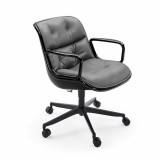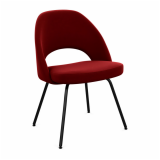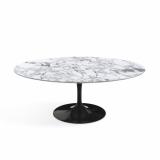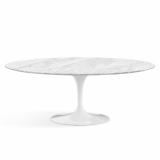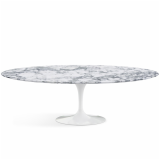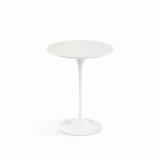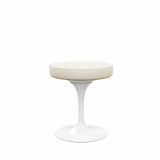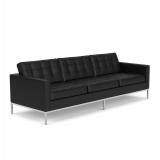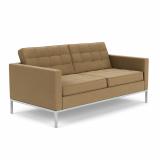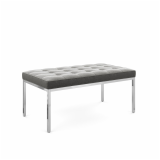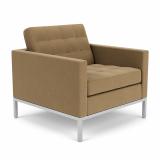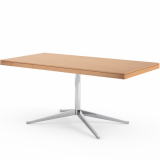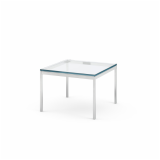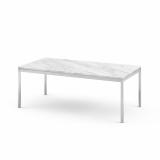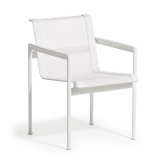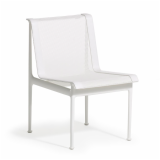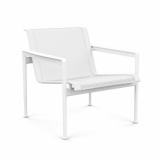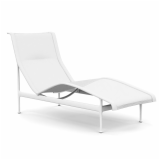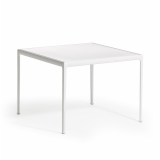Matthew Weiner's Mad Men
With the end of an era, the Museum of the Moving Image mounts a retrospective
In commemoration of Mad Men’s final season on television—the second half of which resumes April 5, 2015—New York’s Museum of the Moving Image has launched a retrospective exhibition titled “Matthew Weiner’s Mad Men” that features the large-scale sets that helped set the tone for the meticulous, slow-paced drama that’s unfolded over the past seven seasons. Don Draper’s office from the first three seasons and the kitchen from the Draper’s Ossining home are two of the sets that will be featured along with twenty five of the iconic costumes from the show. In addition, ephemera and miscellany from Matthew Weiner’s time as a writer, producer, director, and showrunner has been catalogued as part of the exhibition, including research materials and personal notes from the show’s visionary creator.
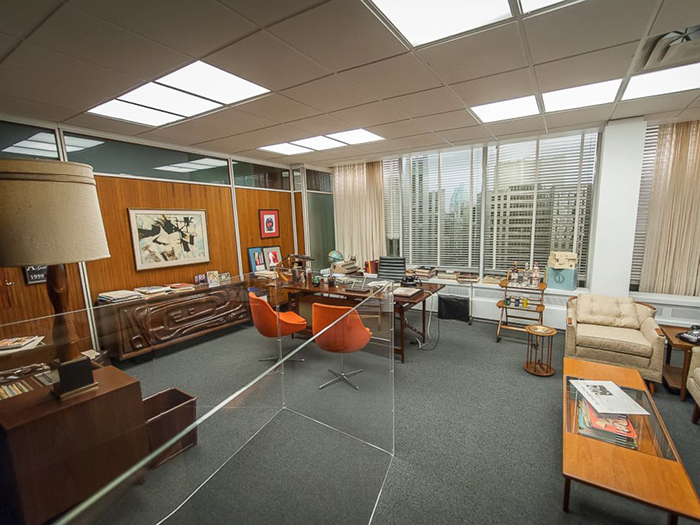
Don Draper's office. Photograph courtesy of Thanassi Karageorgiu/Museum of the Moving Image.
The series, which made its debut July 19, 2007, helped revive interest in Modernism and its aesthetic, creating a ripple effect that impacted contemporary fashion, furniture, and interior design. The debonair style of the show’s complex, flawed characters contributed to the desire for clean lines, functional design, and timeless elegance, giving way to a tide of licensed merchandise. However, the show itself has maintained a consistent perspectival lens, pointed backward toward the historical record of the 1960s. Much credit is due to Claudette Didul-Mann, Mad Men’s set decorator, who meticulously researched authentic, vintage furnishings that corresponded with each year in the show’s retroactive timeline to assure no anachronisms. In addition to her fastidious research, Didul-Mann was equally unafraid to draw on her father’s own experience on Madison Avenue, "My father worked in advertising for over 40 years and there was Herman Miller and Knoll furniture everywhere you went."
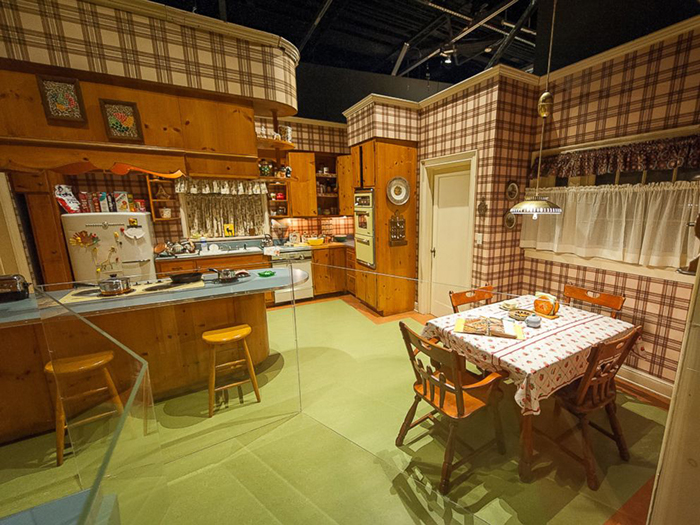
Draper residence kitchen in Ossining. Photograph courtesy of Thanassi Karageorgiu/Museum of the Moving Image.
The exhibition marks the first time that objects and set decorations from the show have been presented to the public on this scale. The exhibition opened on March 14, 2015 and will run through June 14. Tickets for the show and other events, including "An Evening with Matthew Weiner," can be purchased through the Museum of the Moving Image's website.
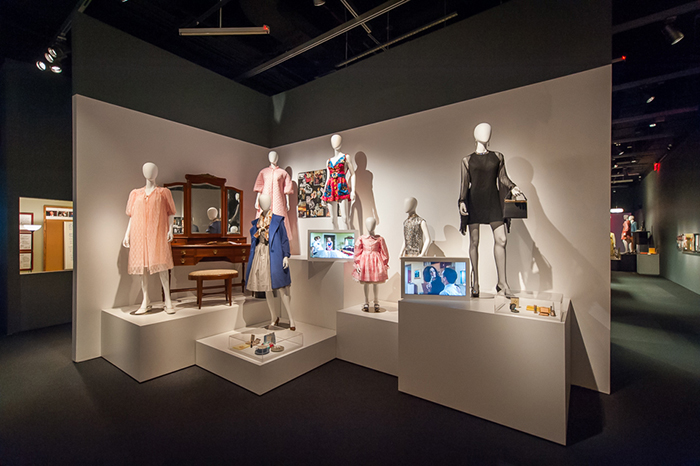
Costumes from Mad Men. Photograph courtesy of Thanassi Karageorgiu/Museum of the Moving Image.
If you’re planning on rewatching (or binge-watching) the show, be sure to look at for the Knoll product featured throughout. As an aid, we’ve noted some of the scenes and episodes where you can find Knoll, but you’ll have to do the spotting yourself. Happy hunting. (NOTE: Spoilers follow the line break.)
Seasons 1-3
In Seasons 1 through 3, Sterling Cooper is billed as a small, conservative advertising agency. Stylistically speaking, the wood-paneled walls and carpeted floors appear from another another era and make for a somewhat drab environment. Teak Danish furnishings are found in abundance, however, anticipating the progressive interiors movement that develops over the course of the show. The open-plan office configuration is typical of the time and furnished with vintage office chairs and metal desks.
Season 4 - 5
If “Sterling Cooper [was] positively Cro-Magnon,” to crib Paul Kinsey’s words, by Season 4 Sterling Cooper Draper Pryce has tried to disassociate itself from the agency it once was. This being advertising, a new brand necessitates a new look. In "The Chrysanthemum and the Sword," Don Draper sells potential Japanese clients on the office configuration as if it were a newly packaged product, “The offices are more modern than those you might be familiar with, but we like to think that’s representative of the kind of company we are: forward thinking.”
-
"Christmas Comes But Once A Year" — The office foyer features an arrangement of a Florence Knoll Sofa, Bench, and Settee upholstered in red, yellow, and blue, referencing the modern aesthetic of Piet Mondrian. Bright colors demonstrate the optimism of the era especially when contrasted with the dark veneers of Sterling Cooper. Embracing changes seen in the corporate offices of the time—precipitated by Florence Knoll who headed the Knoll Planning Unit from 1943 to 1965—at SCDP we see the template for the modern office take form: from the bold “star designs” in the lobby to the formation of a creative lounge.
-
"Public Relations" — In Matthew Weiner’s draft of the pilot of Season 4, Roger Sterling’s office was described by a co-worker as, “Looking like an Italian hospital.” Lavishly decorated by his much younger second wife Jane Siegel, the office is geometric and neofuturist, featuring Op Art-inspired wall paneling in the style of Vasilly Vasarely and Bridget Riley. The room is furnished with pieces from Eero Saarinen’s iconic Pedestal Collection which debuted in 1958. The Saarinen Dining Table, Coffee Table, and Tulip Stools introduce a mushroom motif picked up by the Artemide Nesso table lamp. Charlotte Perriand’s B306 Chaise Longue is perhaps the most heavily utilized piece of furniture in the office, given Sterling’s appetite for three-martini lunches. While avant-garde for the time, the office is far from representative of Roger’s conservative style (which we catch a glimpse of in Season 5). Flush with cash, Sterling is ready to invest a disproportionate amount of money on the latest trends as a means to an end, enabling him to pursue his two true interests, women and gin, although not necessarily in that order.
-
"The Chrysanthemum and the Sword" — Ted Chaough, Don Draper’s adversary, is perpetually one step behind the industry’s undisputed creative genius, and as a result resorts to underhanded psychological tactics to try to unnerve his self-proclaimed competition. Described by Draper as “a fly I keep swatting away,” Ted Chaough knows that persistence and subterfuge are the best chance he has of capitalizing on the creative director’s occasional lapses in responsibility. The low-backed Pollock Executive Chair is fitting for Chaough, who, in spite of his ambition, has yet to demonstrate that he’s worthy of a throne. Given Chaough’s more egalitarian outlook, Chaough views himself as on par with his fellow co-workers (most of all, Mrs. Peggy Olson). Accordingly, the same Pollock Executive Chairs surround the conference room table, espousing his forward-thinking ideals.
Season 6
By Season 6, we’ve seen the city undergo a shift as hippy culture takes hold of Madison Avenue. With the animals running zoo, we see an escalation of all office antics, including the open-air use of narcotics, most notably speed, marijuana, and LSD.
-
"For Immediate Release" — With Roger courting a prospective client, Chevy, at the TWA Flight Center, we get an interpretation of Eero Saarinen’s iconic airport interior, which opened in 1962. (NOTE: Mad Men was not able to film on location since the head house has been closed to the public since 2001.) The scene captures the bygone glamour of air travel, when refreshments were served and customers were courted. Saarinen Side Tables and Ludwig Mies van der Rohe’s Barcelona Chair abound, referencing the many sinuous passages and organic-shaped surfaces of Saarinen’s curvaceous head house.
-
"To Have and To Hold" — When Joan reconnects with a college friend, the two forgo their everyday responsibilities and go off galavanting to a nightclub where a Saarinen Side Table is at one with the multicolored lights, psychedelic scene, and deadpan soundtrack of “Bonnie & Clyde,” sung by Brigitte Bardot and Serge Gainsbourg.
-
"A Tale Of Two Cities" — Out in California, Draper and Sterling find themselves in the back seat of a bright red Mustang convertible being lead on by an emboldened Harry Crane who takes them to a hip party in Hollywood Hills. The eastern-influenced abode doesn’t showcase the influence of mid-century modernism, however, pieces from Richard Schultz’s non-corrosive 1966 Collection can be found poolside, ideally suited for the arid California climate.
-
"The Better Half" — After the necessary merger to win Chevy, Peggy Olson finds herself back in the Time-Life building at newly-formed SCDPCGC (Sterling Copper Draper Pryce Cutler Gleason and Chaugh). Now stuck between a rock and a hard place, over the course of the season we see Peggy’s romantic inclinations toward Chaugh come to ahead with her fraught professional relationship with Draper. In her office, the motley collection of mismatched furnishings testifies to her enduring status as a second-class citizen at the company. Given that we see her preemptively sit in Draper’s office chair at the end of Season 6 (while wearing pants no less), it's clear that, for Olson, the chair is a something of symbolic object. The purple Saarinen Arm Chair behind her desk, her only new piece of furniture, was acquired after her promotion to Copy Chief at CGC and is further evidence of Olson’s aspirations of climbing the corporate ladder.
Season 7
Last but not least, Dawn Chambers, Draper’s sixth secretary, can be found seated in a bright-red Saarinen Armchair, shortly before she’s forced to switch desks at Lou’s behest.
All images courtesy of Thanassi Karageorgiu/Museum of the Moving Image.






















